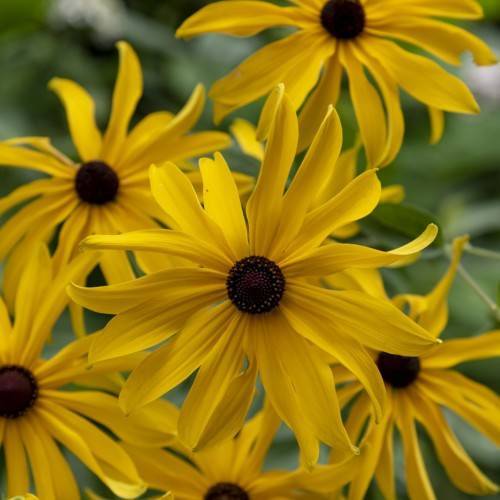
sweet coneflower
Rudbeckia subtomentosa
Cycle:
Herbaceous Perennial
Watering:
Average
Hardiness Zone:
4 - 8
Flowers:
Flowers
Sun:
Full sun,part shade
Leaf:
Yes
Growth Rate:
Low
Maintenance:
Low
Drought Tolerant:
Yes
watering
The sweet coneflower should be watered once or twice a week during its active growing season. During hot, dry weather, water more often; once every 3 days should be sufficient. When watering, it is important to thoroughly soak the soil, making sure that it is moist throughout the entire root zone. This can extend from 4 to 8 inches deep, depending on the size of the plant. Make sure to avoid overwatering, as well as allowing the soil to dry out completely. Additionally, mulching around the plants can help to reduce water evaporation, keeping the soil moist for longer.
sunlight
Sweet Coneflower needs full sun to partial shade and does best when temperatures are not too hot (as can be found in warmer areas of the United States). It can tolerate both hot and cold temperatures and prefers to be placed in a spot that gets at least 4 to 6 hours of sunlight per day, with the most amount of sunshine in the morning. Good air circulation is also important for Sweet Coneflower, as this will help prevent diseases and aid in its growth. If you’re planting in a pot, make sure to use a pot that is large enough and 1 that drains well. Be sure to consistently water Sweet Coneflower, keeping the soil moist but not overly saturated.
pruning
Sweet coneflower (Rudbeckia subtomentosa) is best pruned in early spring, before the plant starts to leaf out. Prune by cutting down the stems to 12”-18” from the ground level. Doing this will encourage stronger branching from the base and promote bushier plants that are better able to withstand summer heat. After pruning, thin out weaker stems and remove any dead, damaged, or diseased stems. Deadheading spent flower blooms during the summer will encourage a second bloom.
